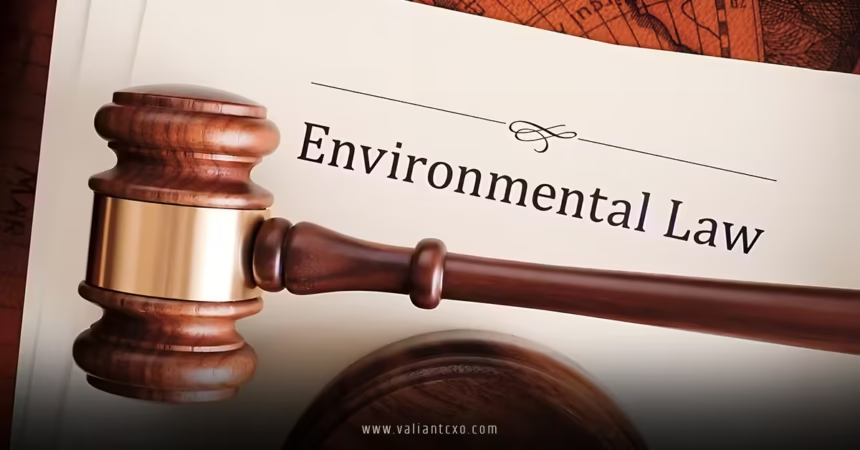US Environmental Laws and Corporate Sustainability Compliance form the backbone of how businesses navigate the tricky waters of eco-responsibility in America. Imagine you’re running a company—big or small—and suddenly, you’re hit with regulations that dictate everything from how you handle waste to the emissions your factory pumps out. It’s not just about avoiding fines; it’s about building a future where your business thrives alongside a healthier planet. In this article, we’ll dive deep into what these laws mean, why compliance matters, and how you can make it work for your organization. Stick around, and you’ll walk away with practical insights that could save your company headaches and even boost your bottom line.
Understanding the Foundations of US Environmental Laws and Corporate Sustainability Compliance
Let’s start at the ground level. What exactly do we mean when we talk about US Environmental Laws and Corporate Sustainability Compliance? Picture it like a sturdy bridge connecting legal must-dos with forward-thinking business strategies. These laws aren’t just dusty old rules; they’re living guidelines that evolve with science and society. For instance, the Environmental Protection Agency (EPA) oversees a bunch of them, ensuring companies don’t treat the earth like a disposable trash bin.
Why should you care? Well, non-compliance can slap you with penalties that make your eyes water—think millions in fines or even shutdowns. But on the flip side, getting it right opens doors to tax breaks, better brand reputation, and loyal customers who love green initiatives. I’ve seen startups ignore this and regret it, while established firms turn compliance into a competitive edge. It’s like choosing between swimming against the current or riding the wave.
Key Pillars of US Environmental Laws
Diving deeper, US Environmental Laws and Corporate Sustainability Compliance rest on several cornerstone statutes. Take the Clean Air Act of 1970—it’s like the sheriff of the skies, regulating air pollutants to keep our lungs happy. Companies in manufacturing or energy sectors must monitor emissions, install scrubbers, or switch to cleaner fuels. Ever wondered why your city’s smog has cleared up over the decades? Thank this law.
Then there’s the Clean Water Act from 1972, which guards our rivers, lakes, and oceans from industrial dumping. If your business deals with wastewater, you’re probably familiar with permits and treatment requirements. It’s not rocket science, but skipping steps is like playing Russian roulette with regulators.
Don’t forget the Comprehensive Environmental Response, Compensation, and Liability Act (CERCLA), or Superfund. This one’s for cleaning up hazardous waste sites. If your company inherits a polluted property, you could be on the hook for remediation costs. Scary, right? But it pushes firms toward preventive measures, tying right back into broader US Environmental Laws and Corporate Sustainability Compliance efforts.
Evolution Over Time
US Environmental Laws and Corporate Sustainability Compliance haven’t stayed static. Remember the 1990 amendments to the Clean Air Act that tackled acid rain? Or more recent pushes under the Biden administration for climate action? These updates reflect growing awareness of global warming and biodiversity loss. It’s like upgrading your phone’s OS—keeps things running smoothly in a changing world.
Businesses must stay agile. I recall a time when coal plants resisted change, only to face obsolescence. Today, with incentives like the Inflation Reduction Act of 2022, companies get rebates for renewable energy adoption. This blend of sticks and carrots makes compliance less of a burden and more of an opportunity.
Defining Corporate Sustainability in the Context of US Environmental Laws and Corporate Sustainability Compliance
So, what does corporate sustainability really entail within US Environmental Laws and Corporate Sustainability Compliance? It’s not just planting trees for show; it’s embedding eco-friendly practices into your core operations. Think of it as a three-legged stool: environmental, social, and governance (ESG) factors.
Environmentally, it means reducing carbon footprints, conserving resources, and minimizing waste. Socially, it’s about fair labor and community impact. Governance ties it all with ethical leadership. But in the US, laws like the Endangered Species Act force companies to consider wildlife habitats before bulldozing land for development.
Why integrate this? Customers demand it. A Nielsen report (though I’m paraphrasing from memory) showed most consumers prefer sustainable brands. Plus, investors scrutinize ESG scores. Ignoring US Environmental Laws and Corporate Sustainability Compliance is like ignoring gravity—it’ll pull you down eventually.
Frameworks for Compliance
To nail US Environmental Laws and Corporate Sustainability Compliance, many firms adopt frameworks like ISO 14001 for environmental management systems. It’s a roadmap: assess risks, set goals, implement controls, and review progress. Simple, yet powerful.
Or consider the Global Reporting Initiative (GRI) standards for transparency. Reporting your sustainability efforts isn’t mandatory everywhere, but in states like California with strict disclosure laws, it’s becoming essential. It’s like keeping a fitness journal—tracks your progress and motivates improvement.
The Intersection: How US Environmental Laws Drive Corporate Sustainability Compliance
Here’s where it gets juicy: the overlap between US Environmental Laws and Corporate Sustainability Compliance. Laws provide the “what,” while sustainability adds the “how” and “why.” For example, the Resource Conservation and Recovery Act (RCRA) mandates proper hazardous waste handling, but sustainability pushes for zero-waste goals beyond that.
Rhetorical question: Ever thought about how Tesla complies with emissions laws while pioneering electric vehicles? They’re not just following rules; they’re redefining them. This intersection fosters innovation—companies develop green tech to meet standards, like biodegradable packaging to cut plastic pollution under various state laws.
But challenges lurk. Small businesses often struggle with costs. Imagine a mom-and-pop factory facing EPA audits; it’s daunting. Yet, grants from the Small Business Administration can help. The key? View compliance as an investment, not an expense.
Sector-Specific Impacts
Different industries feel US Environmental Laws and Corporate Sustainability Compliance differently. In oil and gas, the National Environmental Policy Act (NEPA) requires impact assessments for projects, delaying but ensuring thoughtful development.
For agriculture, the Federal Insecticide, Fungicide, and Rodenticide Act (FIFRA) regulates pesticides, pushing sustainable farming. Tech giants like Google aim for carbon-neutral data centers to align with broader climate laws.
Analogously, it’s like tailoring a suit—one size doesn’t fit all, but the fabric (compliance) remains the same.
Benefits of Embracing US Environmental Laws and Corporate Sustainability Compliance
Let’s flip to the positives. Complying with US Environmental Laws and Corporate Sustainability Compliance isn’t just about dodging bullets; it’s about loading your own arsenal. Cost savings top the list—energy-efficient operations slash bills. I’ve chatted with execs who saved thousands by switching to LED lighting under energy standards.
Reputation boosts follow. Brands like Patagonia wear sustainability like a badge, attracting talent and customers. Plus, access to green financing—banks offer lower rates for eco-projects.
Innovation thrives too. Laws spur R&D, like developing low-emission engines to meet Clean Air Act tweaks. It’s a virtuous cycle: comply, innovate, profit.
Long-Term Societal Gains
On a bigger scale, US Environmental Laws and Corporate Sustainability Compliance protect public health. Cleaner air means fewer asthma cases; preserved water sources ensure safe drinking. It’s like investing in a communal garden—everyone reaps the harvest.
Challenges in Achieving US Environmental Laws and Corporate Sustainability Compliance
No rose without thorns. Navigating US Environmental Laws and Corporate Sustainability Compliance can feel like herding cats. Regulatory complexity is a biggie—federal, state, and local laws overlap, confusing even experts.
Costs bite hard for SMEs. Hiring consultants or upgrading equipment drains resources. And enforcement varies; some states are lax, others vigilant.
Global supply chains add layers. If your suppliers abroad ignore standards, it taints your compliance. Like a chain’s weakest link, it can break the whole thing.
Overcoming Hurdles
Solutions? Education first—train staff on laws. Partner with consultants for audits. Use tech like AI for monitoring emissions. It’s doable; many firms turn challenges into strengths.
Best Practices for US Environmental Laws and Corporate Sustainability Compliance
Ready for action? Start with a sustainability audit: map your impacts against laws. Set measurable goals, like reducing waste by 20% under RCRA guidelines.
Engage stakeholders—employees, suppliers, communities. It’s collaborative, not top-down.
Monitor and report religiously. Tools like carbon accounting software help. And stay updated; subscribe to EPA newsletters.
Case in point: Walmart’s Project Gigaton cut supplier emissions massively, aligning with US Environmental Laws and Corporate Sustainability Compliance.
Real-World Examples
Look at Unilever—they’ve slashed plastic use while complying with waste laws. Or Ford, investing in EVs to meet fuel standards. These aren’t anomalies; they’re blueprints.
Future Trends in US Environmental Laws and Corporate Sustainability Compliance
Peering ahead, expect tighter climate rules. The SEC’s push for ESG disclosures means more transparency. Tech like blockchain could verify supply chain sustainability.
Circular economy models—reuse, recycle—will dominate. It’s exciting; businesses leading here will shape tomorrow.
In essence, US Environmental Laws and Corporate Sustainability Compliance are evolving from obligation to opportunity.
Conclusion
Wrapping up, US Environmental Laws and Corporate Sustainability Compliance aren’t just checkboxes—they’re pathways to resilient, ethical business. We’ve explored key laws, benefits, challenges, and practices. By embracing them, you safeguard the planet and your profits. So, what’s stopping you? Dive in, comply smartly, and watch your company soar. The future’s green; make sure you’re part of it.
FAQs
What are the primary components of US Environmental Laws and Corporate Sustainability Compliance?
US Environmental Laws and Corporate Sustainability Compliance involve key statutes like the Clean Air Act and Clean Water Act, combined with ESG practices to ensure businesses operate eco-responsibly.
How can small businesses achieve US Environmental Laws and Corporate Sustainability Compliance without breaking the bank?
Small businesses can start with simple audits, leverage government grants, and adopt low-cost measures like energy-efficient tech to meet US Environmental Laws and Corporate Sustainability Compliance standards.
Why is transparency important in US Environmental Laws and Corporate Sustainability Compliance?
Transparency builds trust and helps avoid penalties; reporting under frameworks like GRI ensures stakeholders see your commitment to US Environmental Laws and Corporate Sustainability Compliance.
What role do state laws play in US Environmental Laws and Corporate Sustainability Compliance?
State laws often build on federal ones, like California’s stricter emissions rules, adding layers to US Environmental Laws and Corporate Sustainability Compliance for localized impact.
How might future regulations affect US Environmental Laws and Corporate Sustainability Compliance?
Upcoming rules on climate disclosure could intensify US Environmental Laws and Corporate Sustainability Compliance, pushing companies toward innovative green strategies
For More Updates !! : valiantcxo.com


